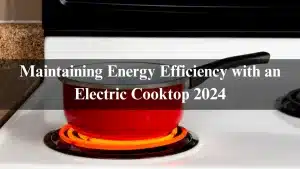The kitchen’s heart, the cooktop, has evolved significantly. Once limited to gas, we now have sleek, modern electric induction cooktop options. But which one truly deserves a spot in your culinary kingdom? This age-old debate between electric cooktop over induction cooktops has sparked countless kitchen conversations. Let’s dive into the pros and cons of each to help you make an informed decision for your home.
Whether you’re a seasoned chef or a casual home cook, finding the perfect cooktop can transform your cooking experience. So, let’s explore the world of electric and induction cooktops together!
Table of Contents
Which Is Better: Induction or Electric Cooktops?
When comparing the two, induction cooktops generally outperform electric cooktops. Induction uses electromagnetic heating, providing faster cooking times, better energy efficiency, and a safer cooking environment. On average, induction cooktops are about 5-10% more efficient than electric smooth tops, making them a better choice for both your wallet and the environment.
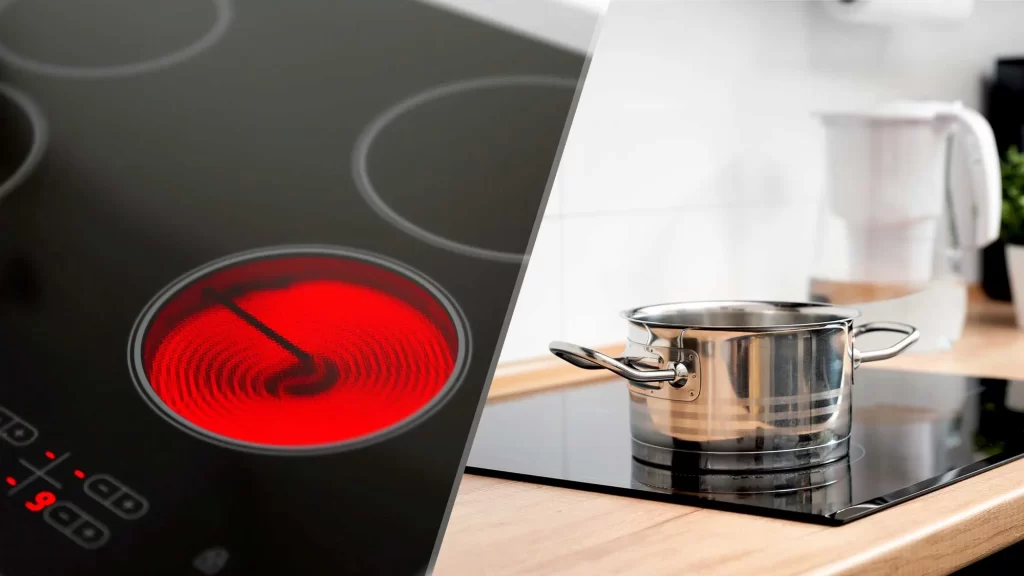
While induction cooktops require specific magnetic cookware, they excel in temperature control and ease of cleaning. Conversely, electric cooktops are more affordable and compatible with any cookware but tend to heat up slowly and have a higher burn risk due to their hot surfaces. Ultimately, the best choice depends on your individual cooking needs, budget, and available cookware.
Is Induction More Efficient Than Electric?
Induction cooking is significantly more efficient than traditional electric cooking methods. While both rely on electricity, induction technology substantially improves energy conversion. Induction cooktops achieve an efficiency of around 85%, compared to about 32% for gas and 75-80% for electric resistance heating elements.
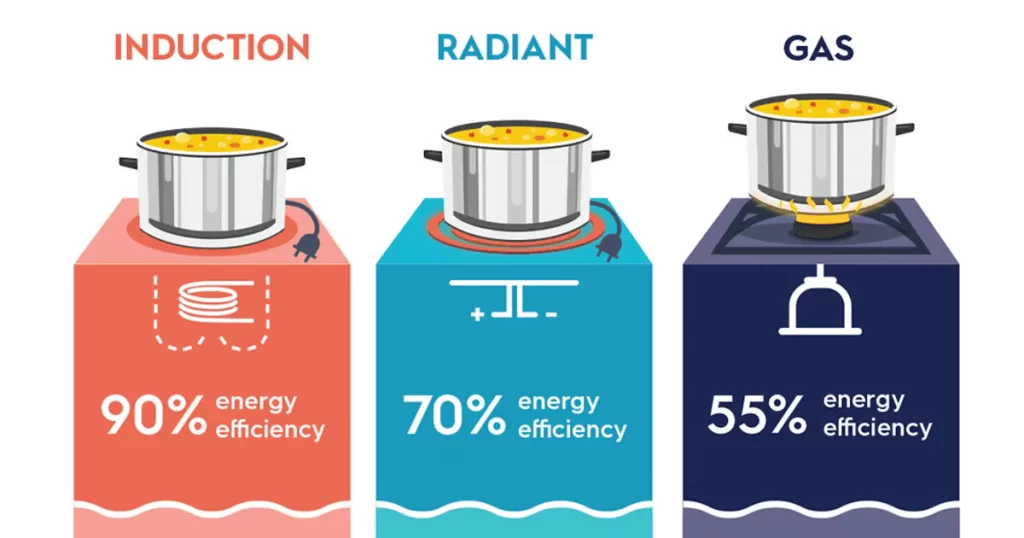
Additionally, induction cooktops help maintain cooler kitchen temperatures, reducing the load on your HVAC system. If widely adopted, induction cooktops could yield annual energy savings exceeding 1,000 gigawatt-hours in the U.S., translating to over $125 million in cost savings.
In essence, induction cooking represents a technological leap in kitchen efficiency, offering both environmental and economic benefits.
Comparison of Electric Cooktops and Induction Cooktops
| Features | Electric Cooktop | Induction Cooktop |
| Heating Element | Metal coil | Copper oil |
| Heat Transfer | Direct contact with cookware | Directly heats cookware |
| Efficiency | 75-80% | 85% |
| Speed | Slow | Fast |
| Safety | Hot cooktop surface | Cool cooktop surface |
| Cookware Compatibility | Any cookware | Magnetic cookware only |
| Cost | Affordable | More Expensive |
Pros of Electric Cooktops
- Easy to Clean: The smooth glass surface simplifies maintenance.
- Safety: No open flames reduce the risk of fires or burns.
- Consistent Heat: Provides reliable and even heat distribution.
- Versatile: Compatible with various cookware types.
- Affordable: Generally more budget-friendly than induction cooktops.
- No Ventilation Required: Doesn’t produce harmful fumes or require special ventilation.
- Cooler Kitchen: Generates less heat compared to gas cooktops.

Cons of Electric Cooktops
- Slower Heating and Cooling: Takes longer to heat up and cool down.
- Less Precise Temperature Control: Achieving exact temperatures can be challenging.
- Residual Heat: The surface can remain hot after use, increasing burn risks.
- Higher Energy Consumption: Less energy-efficient than induction, leading to higher bills.
- Dependence on Electricity: Power outages render the cooktop unusable.
- Potential for Uneven Heating: Some models may experience uneven heat distribution.
Pros of Induction Cooktops
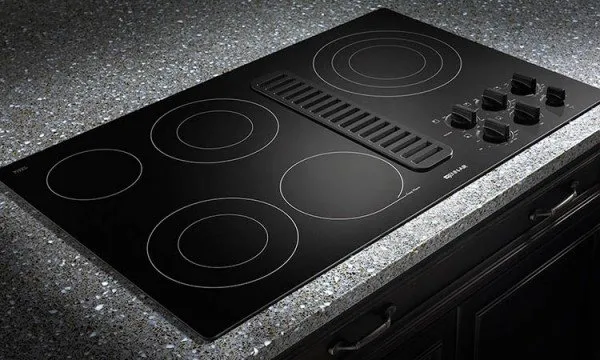
- Energy Efficient: Converts electricity to heat more efficiently.
- Rapid Heating and Cooling: Heats cookware much faster than electric or gas options.
- Precise Temperature Control: Offers superior precision for delicate cooking.
- Safer: The cooktop surface remains cool, reducing burn risks.
- Easy to Clean: Smooth surface is easy to wipe clean.
- Environmentally Friendly: Lower energy consumption reduces carbon footprint.
- Improved Air Quality: No harmful fumes or pollutants released during cooking.
- Smart Features: Many models offer advanced features like timers and connectivity.
Cons of Induction Cooktops
Power Dependency: Like electric cooktops, induction cooktops require electricity to operate.
Higher Initial Cost: More expensive than electric or gas models.
Requires Specific Cookware: Only magnetic cookware works, necessitating new pots and pans.
Noise: Some induction models produce a faint hum or clicking sound.
Potential for Electromagnetic Interference: Minimal risk with electronic devices.
Learning Curve: May take time to adjust for those used to gas or electric cooktops.
Sensitivity to Pan Size and Placement: Requires proper positioning of cookware to function effectively.
Moreover, If you want to learn more about the cons of induction cooktops, you can read this article: Induction Cooktops, How to use and how it works. Latest Info 2024Cooking Speed – Which One Wins?
Boiling Water Test
- Electric (Ceramic): Takes 8-10 minutes to boil a large pot of water.
- Induction: Can boil the same pot in just 3-5 minutes. The speed difference can be remarkable, especially for pasta dishes.
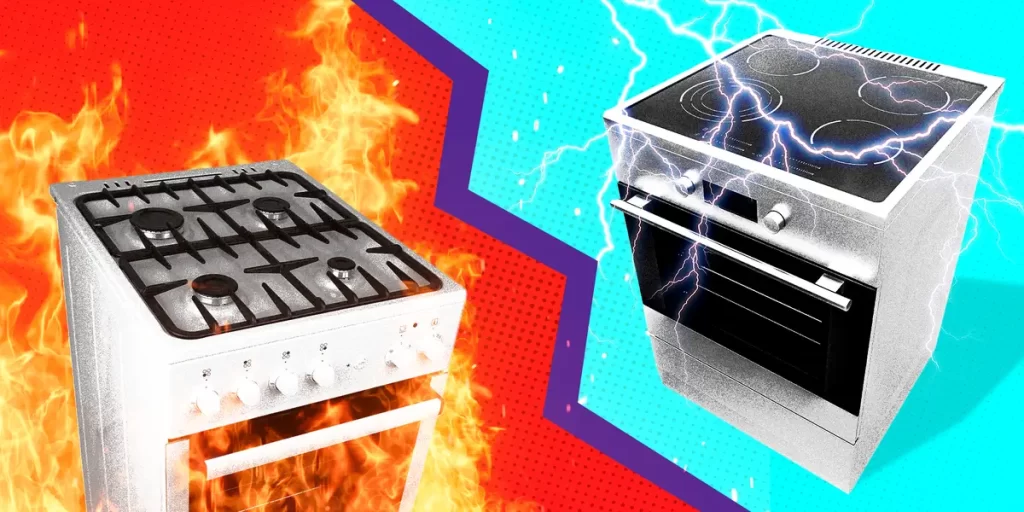
Ease of Cleaning – Which Is Easier?
Both electric (ceramic) and induction cooktops offer smooth surfaces that are easier to clean than traditional gas stoves. However, there’s a key difference:
- Electric (Ceramic): The entire surface gets hot, and spills can burn onto the glass, requiring more effort to clean.
- Induction: The surface doesn’t get as hot (only where the pan touches), making spills easier to wipe away.
Temperature Control – Which Offers More Precision?
- Electric (Ceramic): Offers decent heat control, but temperature changes aren’t instant.
- Induction: Provides immediate heat adjustments, giving you excellent control over simmering and sautéing.

Cookware Compatibility – Which Is More Versatile?
- Electric (Ceramic): Compatible with almost any cookware—no worries here.
- Induction: Requires magnetic cookware, meaning you might need to invest in new pots and pans.

Tip: Test cookware compatibility by holding a magnet to the bottom; if it sticks, it will work on induction.
Safety – Which Cooktop Is Safer?
Both cooktops come with safety features, but induction has a slight edge:
- Electric (Ceramic): The surface remains hot long after use, posing a burn hazard.
- Induction: The cooktop only heats when a pan is present, reducing burn risks significantly.
Budget-Friendliness – Which Is More Affordable?
- Electric (Ceramic): Generally more affordable upfront, with decent models priced between $500 and $1,500.
- Induction: Tends to be pricier, with models starting at around $1,000 and reaching over $3,000. However, energy savings may balance out the initial investment over time.
| Cooktop Type | Price Range | Long-Term Cost Efficiency |
| Electric (Ceramic) | $500 – $1,500 | Higher energy use |
| Induction | $1,000 – $3,000+ | Lower energy use |
Durability and Maintenance – What to Expect
- Electric (Ceramic): Durable but can crack if heavy items fall on them. Heating elements may wear out over time.
- Induction: Fewer moving parts mean fewer failures, though the glass surface can scratch if not handled carefully.
Which Is Better for Daily Cooking?
In my experience, induction has become my go-to for daily cooking. Its speed, precision, and energy efficiency significantly enhance my cooking routine. However, electric (ceramic) cooktops remain a solid choice for those who prioritize versatility in cookware and don’t mind longer heating times.
How to Determine Which Cooktop Is Best for You?
Selecting the ideal cooktop begins with assessing your kitchen layout and space. Next, check your existing gas or electrical connections to determine compatibility. After that, consider your cooking style, budget, and environmental preferences. Testing different cooktops in person can also help you make an informed choice.
Related Articles:
Induction Cooktops How to use and how its work? Latest Info 2024
Electric Cooktops Read All the Latest Info About It 2024
Induction cooktops vs. electric cooktops
Conclusion
Induction cooktops generally surpass electric cooktops in efficiency, speed, and safety. Their ability to directly heat cookware offers significant advantages over traditional electric heating methods. However, the higher initial cost and requirement for specific cookware might deter some consumers.
Electric cooktops remain viable for those prioritizing affordability and compatibility with existing cookware. Still, they often compromise on speed, efficiency, and safety. Ultimately, the optimal choice depends on individual preferences, budget, and specific cooking needs. Careful consideration of kitchen layout, available space, and desired features is essential when selecting a cooktop.
FAQs
Can I use regular pots and pans on an induction cooktop?
No, you need magnetic cookware for induction. You can test this with a magnet.
Is an induction cooktop worth the investment?
Yes, especially if you value speed, precision, and energy efficiency. Over time, the savings on energy bills could balance out the initial cost.
Do induction cooktops make noise?
Some induction cooktops produce a faint hum or clicking sound, especially on high settings or when using certain pans.
Are electric (ceramic) cooktops more prone to damage?
Ceramic cooktops can crack if heavy items are dropped, and cleaning burnt spills can be challenging, but they are generally durable with proper care.



